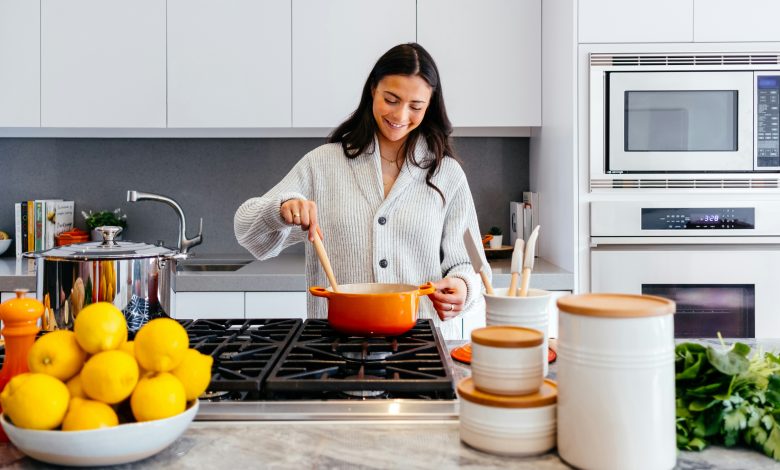Elevating Home Cooking with Professional Spice Techniques

Toasting spices is a fundamental technique that can transform the flavors in your kitchen. When spices are gently heated in a dry pan, the heat helps to release essential oils and compounds, deepening flavors and adding complexity to the dish. This process can elevate simple ingredients like cumin, coriander, and mustard seeds, giving them a richer, more robust profile simply with Authentic Curry Paste. It’s crucial to toast spices just until they become fragrant and begin to darken slightly; over-toasting can lead to bitterness. This skill is essential for achieving the aromatic foundations that characterize much of Indian and Middle Eastern cuisine.
-
Creating Signature Spice Blends
Developing your own spice blends not only personalizes your cooking but also ensures freshness and tailor-made flavors that are perfectly suited to your taste. By combining base spices like turmeric and paprika with accent flavors such as cinnamon or nutmeg, you can create blends that are unique and versatile. This can range from creating the perfect taco seasoning to crafting a unique curry powder. Homemade blends avoid the fillers and preservatives often found in store-bought versions, ensuring your cooking is healthier and more flavorful.
-
Understanding Spice Pairings and Combinations
Just as in winemaking, where understanding grape varietals is key, in cooking, knowing which spices pair well together can enhance the dining experience. Certain spices naturally complement each other; for example, cumin and coriander share a natural affinity and often appear together in recipes from various cuisines. Learning these combinations allows for better seasoning and a more intuitive cooking process. This knowledge can also inspire innovation, leading to the creation of new, exciting dishes that might become your signature.
-
The Science of Grinding Spices
Grinding spices just before use is one of the simplest yet most effective ways to elevate your cooking. Pre-ground spices can lose their potency over time, but whole spices maintain their essential oils and flavors longer. Using a mortar and pestle or a spice grinder allows you to control the fineness of the grind, adjusting it based on the cooking method and timing. For instance, a coarser grind might be ideal for slow-cooked dishes, while a fine powder is best for quick-cooking meals. Understanding this can significantly affect the outcome of your culinary endeavors.
-
Layering Spices for Depth of Flavor
Layering spices involves adding different spices at various stages of the cooking process to build a complex flavor profile. For example, adding ground spices early in the cooking process allows them to meld with the fat and create a flavorful base. Adding fresh herbs or more volatile spices towards the end preserves their brightness and aroma. This technique is especially prominent in cuisines like Indian, where spices might be added both at the start of cooking and again as a finishing tadka (tempering). Mastering this technique ensures every layer of the dish has a distinct, yet harmonious, flavor.
-
Timing the Addition of Spices in Cooking
The point at which spices are added during the cooking process can dramatically affect the flavor of a dish. Some spices, like bay leaves or cinnamon sticks, release their flavors slowly over time and are ideal for simmering dishes. Others, such as paprika or turmeric, can burn easily and are often best added later or with liquids to prevent scorching. Understanding when to introduce spices into your cooking can prevent overpowering flavors and maintain the desired flavor integrity of the final dish.
Why Milkshakes Are Recommended During Pregnancy?
-
Using Whole vs. Ground Spices
Choosing between whole and ground spices can affect both the intensity and the release of flavors. Whole spices, such as cloves, star anise, and cardamom pods, are typically added to dishes that cook for longer periods, allowing their subtle flavors to infuse throughout the dish. Ground spices, on the other hand, are more concentrated and are best used when less cooking time is available or when a more immediate impact on flavor is desired. Knowledge of how and when to use each form can greatly enhance the taste and complexity of your meals.
-
Exploring World Spice Infusions
Incorporating spices from different world cuisines can transform the ordinary into something extraordinary. For instance, adding a touch of saffron to a risotto introduces a Spanish influence, while a sprinkle of sumac can bring a Middle Eastern zest to salads. Exploring global spices not only diversifies your culinary repertoire but also brings new tastes and stories to your dining table. This exploration can be both educational and exciting, as each spice carries cultural significance and history.
Summary
Proper storage of spices is crucial to maintaining their strength and quality. Spices should be kept in a cool, dark place and ideally in airtight containers to protect them from exposure to heat, moisture, and light, which can all degrade their flavors. Additionally, understanding the shelf life of different spices—some lose potency faster than others—can help in planning their usage effectively. This knowledge ensures that you are always cooking with the most impactful ingredients.



